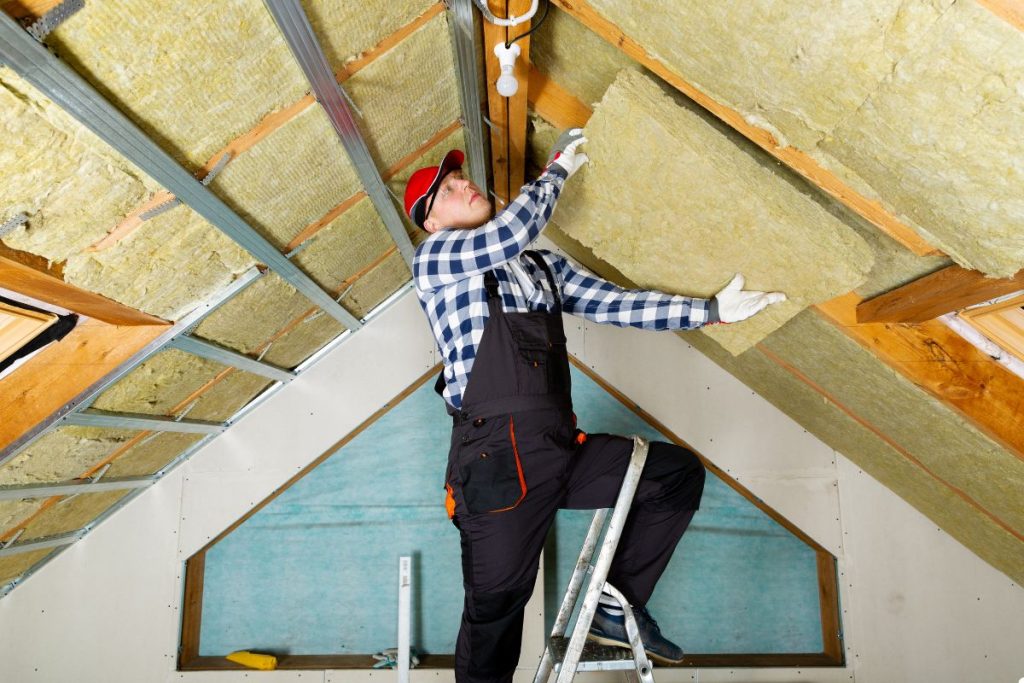
Working with fiberglass insulation doesn’t have to be a daunting task. By following essential safety precautions and using proper handling techniques, you can install or manage fiberglass insulation effectively while minimizing risks. This guide provides a comprehensive overview of how to handle fiberglass insulation safely, from understanding the material to cleaning up afterward. If you prefer professional assistance for your insulation needs, don’t hesitate to Call Us for expert service.
Introduction
Fiberglass insulation is a widely used material in homes across the USA, prized for its ability to regulate temperature, reduce energy costs, and dampen sound. However, it’s also known for causing skin and respiratory irritation if not handled correctly. This article will equip you with the knowledge and techniques you need to handle fiberglass insulation safely and effectively, ensuring a comfortable and healthy home environment. Whether you’re a seasoned DIYer or a first-time homeowner, understanding the proper procedures is key. With our services, you can upgrade your insulation while minimizing exposure to fiberglass particles.

Understanding Fiberglass Insulation
What is Fiberglass?
Fiberglass insulation is made from tiny glass fibers woven together to create a fluffy material. This material traps air, providing a barrier against heat transfer. It’s commonly used in walls, attics, and floors to improve energy efficiency. Knowing the composition helps to understand why specific safety measures are necessary.
Types of Fiberglass Insulation
Fiberglass insulation comes in several forms: batts, rolls, and loose-fill. Batts are pre-cut sections designed to fit between studs and joists. Rolls are long, continuous pieces that can be cut to size. Loose-fill is blown into attics and walls, providing insulation in hard-to-reach areas. Each type requires slightly different handling techniques, which we’ll cover in detail. For other insulation options and their effectiveness compared to fiberglass, you can read our article on alternative insulation materials.
Essential Safety Precautions
Safety is paramount when working with fiberglass insulation. The tiny glass fibers can irritate your skin, eyes, and respiratory system. Always wear the appropriate protective gear before handling fiberglass insulation.
Protecting Your Skin
Wear long sleeves, long pants, and gloves to protect your skin from direct contact with fiberglass. Disposable gloves are ideal, but sturdy work gloves can also be used. After handling fiberglass, wash your hands and arms with soap and water, even if you wore gloves. If you experience itching, avoid scratching and try applying a cool compress.
Protecting Your Eyes
Always wear safety glasses or goggles to prevent fiberglass fibers from entering your eyes. If fibers get into your eyes, flush them with water for at least 15 minutes. If irritation persists, seek medical attention.
Protecting Your Lungs
Wear a dust mask or respirator to protect your lungs from inhaling fiberglass fibers. A dust mask is sufficient for small jobs, but a respirator is recommended for larger projects or when working in enclosed spaces. Proper ventilation is also crucial to minimize exposure.
Preparing Your Workspace
Before you start working with fiberglass insulation, prepare your workspace to minimize exposure and ensure efficient installation. Clear the area of any clutter and cover surfaces with plastic sheeting. Ensure adequate ventilation by opening windows or using a fan. This will help to reduce the concentration of airborne fibers.
Handling Fiberglass Insulation
Proper handling techniques can significantly reduce the amount of dust and irritation caused by fiberglass insulation.
Cutting Fiberglass
Use a sharp utility knife or insulation knife to cut fiberglass insulation. Compress the insulation before cutting to get a clean, straight edge. Measure carefully and cut slightly larger than needed, then trim to fit. Avoid tearing or ripping the insulation, as this will release more fibers into the air. To achieve clean edges on attic insulation, use a sharp utility knife and compress the material before cutting.
Installing Fiberglass
When installing batts, fit them snugly between studs and joists. Avoid compressing the insulation, as this will reduce its effectiveness. When installing rolls, unroll them carefully and cut to fit. For loose-fill, follow the manufacturer’s instructions for proper installation. Pay close attention to corners and edges to minimize heat loss.
Cleaning Up After Insulation
Proper cleanup is essential to remove any remaining fiberglass fibers from your workspace. Vacuum the area thoroughly with a HEPA filter vacuum cleaner. Wipe down surfaces with a damp cloth. Dispose of used insulation and protective gear in sealed plastic bags. Do not sweep, as this will stir up the fibers.

First Aid for Fiberglass Exposure
Even with precautions, you may still experience some fiberglass exposure. Here’s how to treat it:
- Skin Irritation:Wash the affected area with soap and cool water. Avoid scratching. Apply a cool compress or calamine lotion to relieve itching.
- Eye Irritation: Flush your eyes with water for at least 15 minutes. If irritation persists, seek medical attention.
- Respiratory Irritation: Get fresh air and drink plenty of water. If symptoms worsen, consult a doctor.
If you have any concerns about your health after fiberglass exposure, consult a medical professional. For more information, you can read our article on how to handle allergies. If you’re experiencing health concerns after fiberglass exposure, don’t wait—contact us for expert advice. Learn more about managing allergies in our detailed guide!
Frequently Asked Questions (FAQs)
Is fiberglass insulation dangerous?
Fiberglass insulation can cause temporary irritation to the skin, eyes, and respiratory system. However, with proper safety precautions, the risks are minimal. The fibers are not known to cause long-term health problems. By following the guidelines outlined in this article, you can handle fiberglass insulation safely and effectively.
How do I get fiberglass off my skin?
Wash the affected area with soap and cool water. Avoid scratching, as this can embed the fibers further into your skin. Use a clean washcloth to gently remove any visible fibers. Apply a cool compress or calamine lotion to relieve itching.
Can I reuse fiberglass insulation?
It depends on the condition of the insulation. If it’s clean, dry, and undamaged, you can reuse it. However, if it’s been exposed to moisture, mold, or pests, it’s best to discard it. Reusing contaminated insulation can pose health risks.
Conclusion
Handling fiberglass insulation safely and effectively is essential for protecting your health and ensuring optimal energy efficiency in your home. By following the safety precautions, handling techniques, and cleanup procedures outlined in this article, you can minimize the risks associated with fiberglass insulation. Remember, if you’re not comfortable handling fiberglass insulation yourself, professional assistance is always available. Whether you need help with installation, removal, or disposal, Call Us for expert service. Your comfort and safety are our top priorities.
